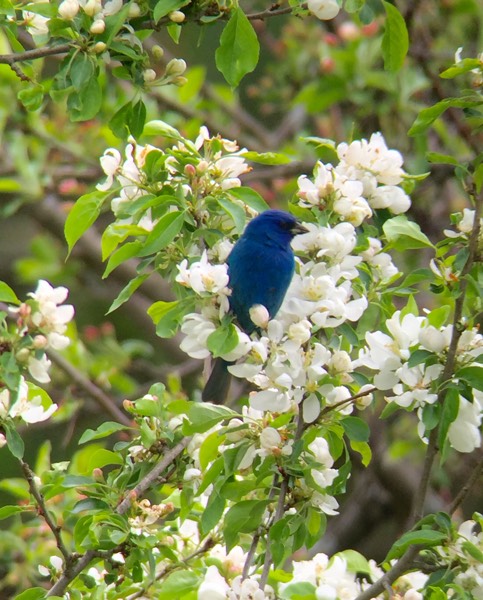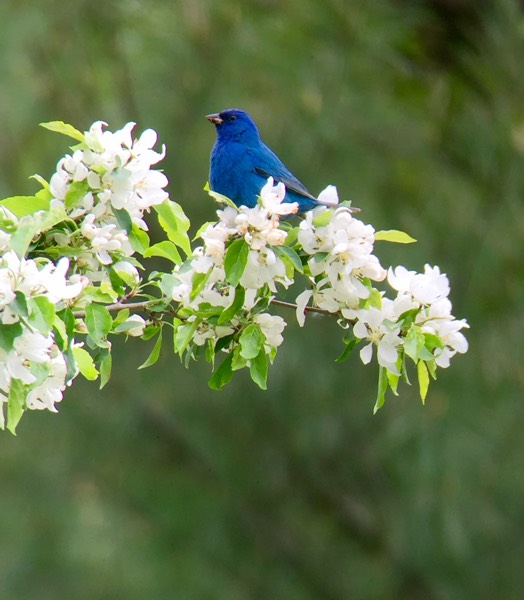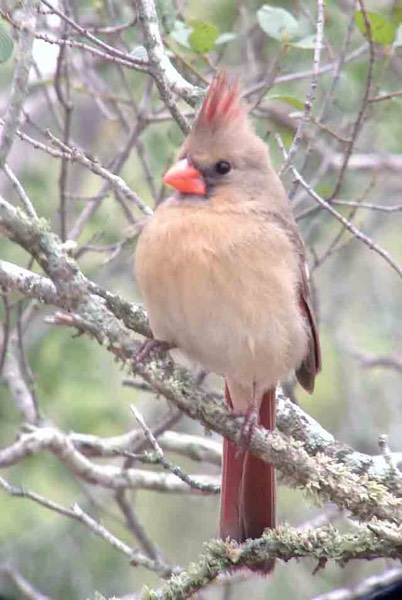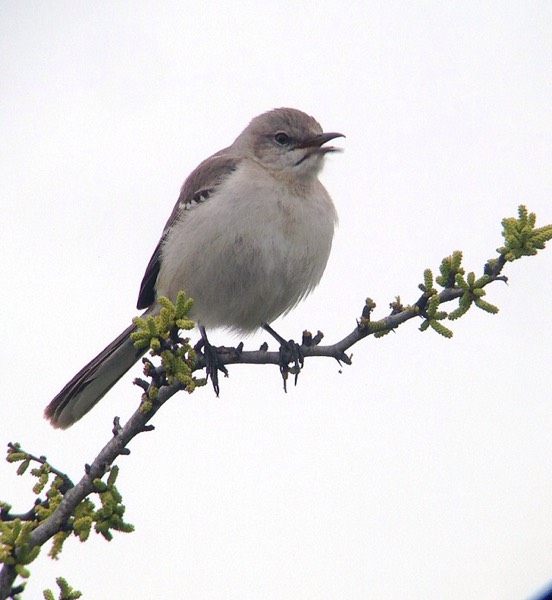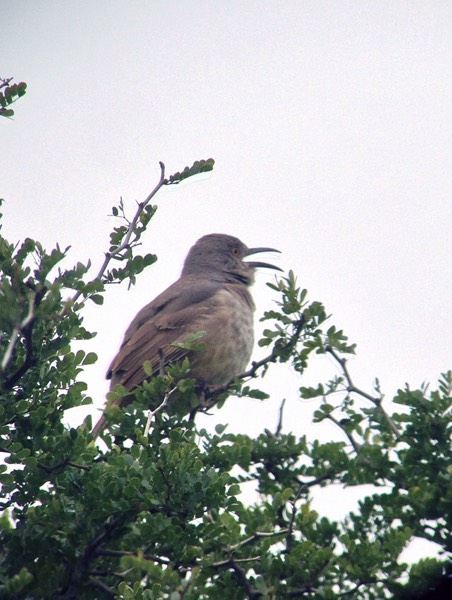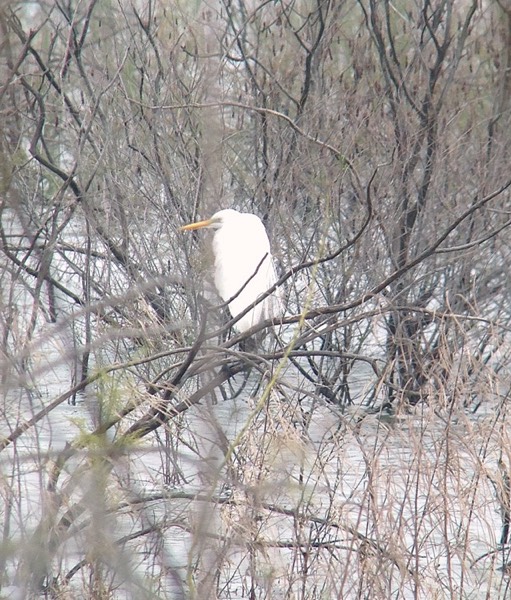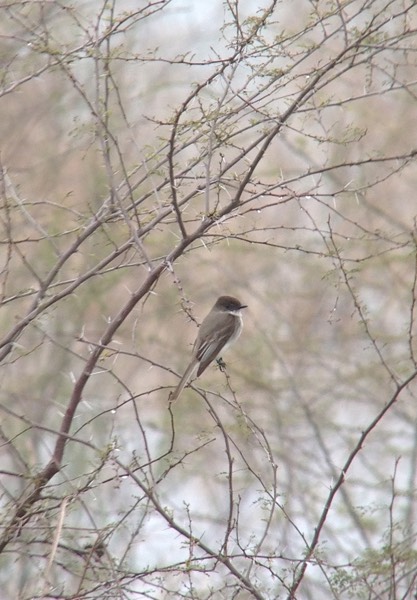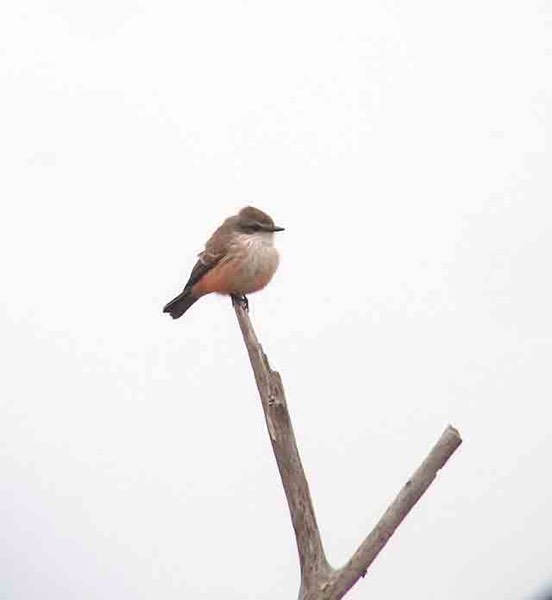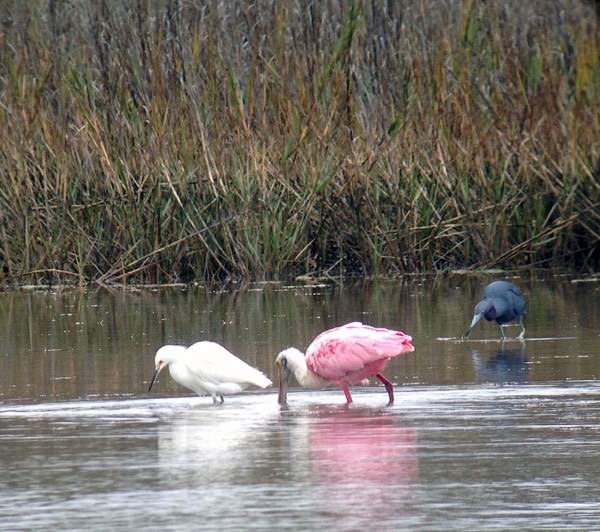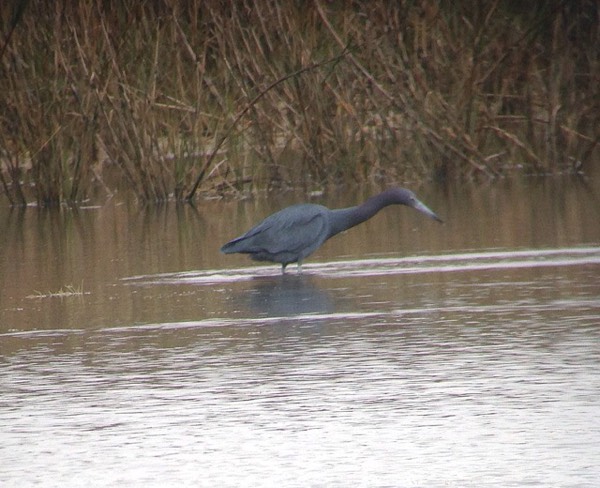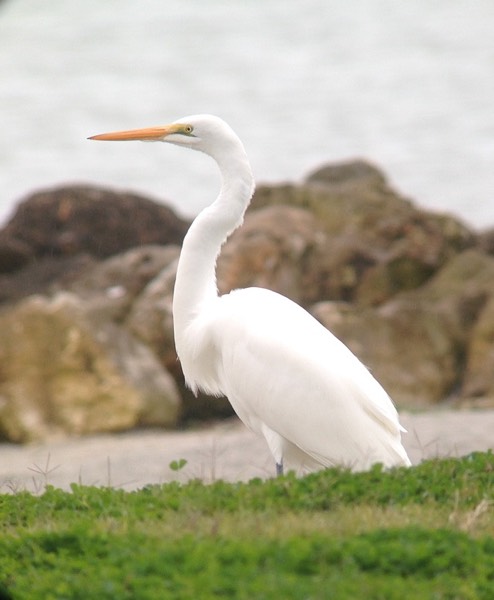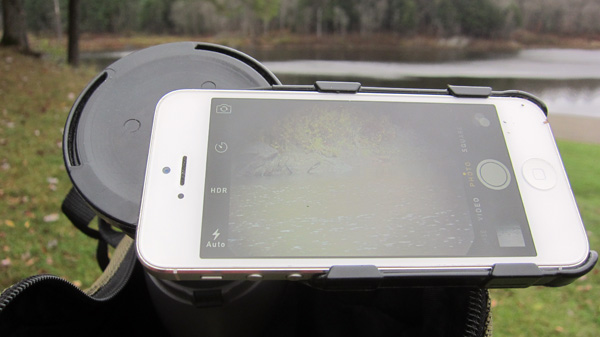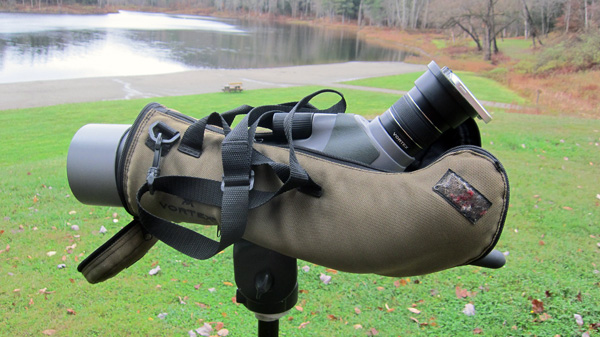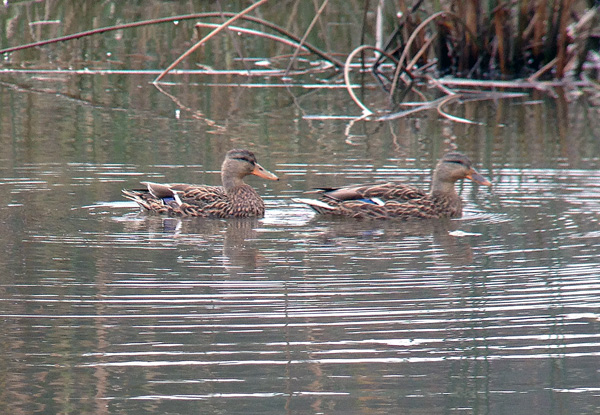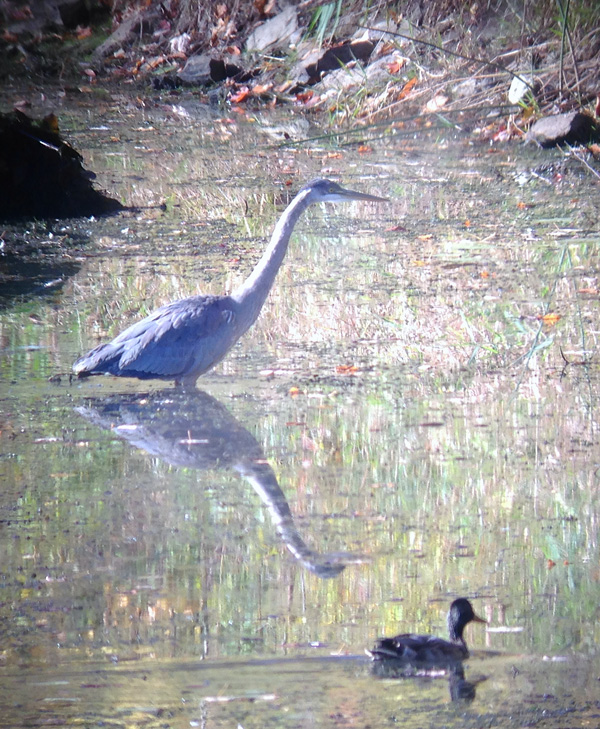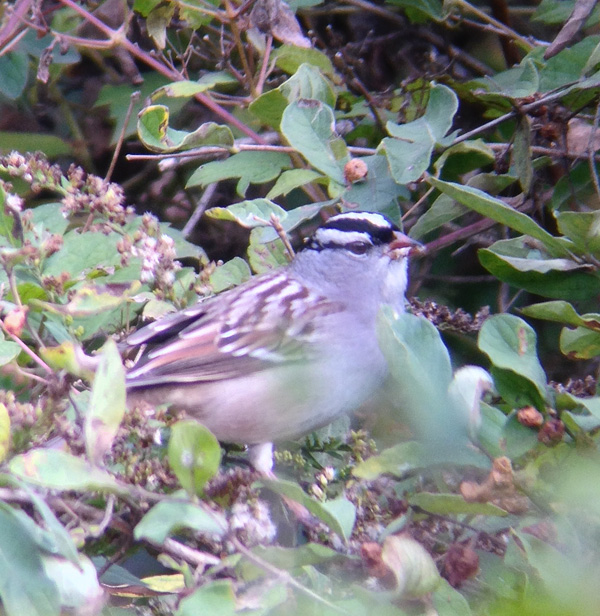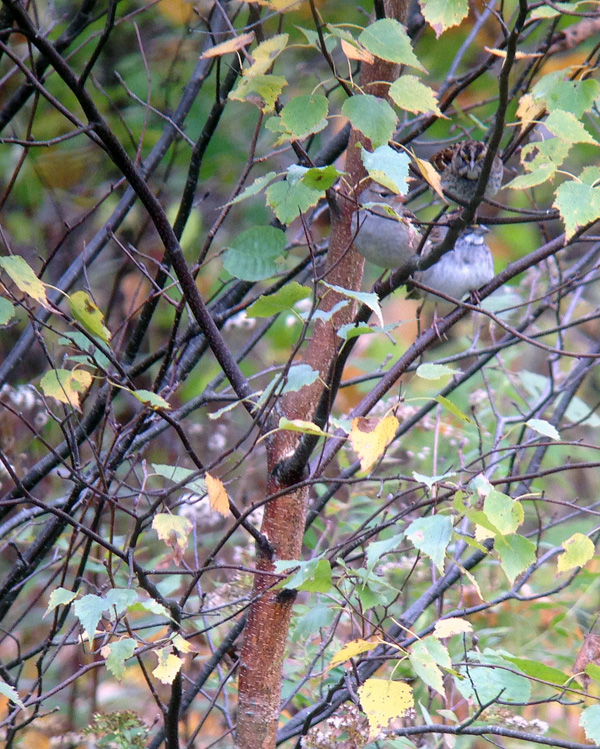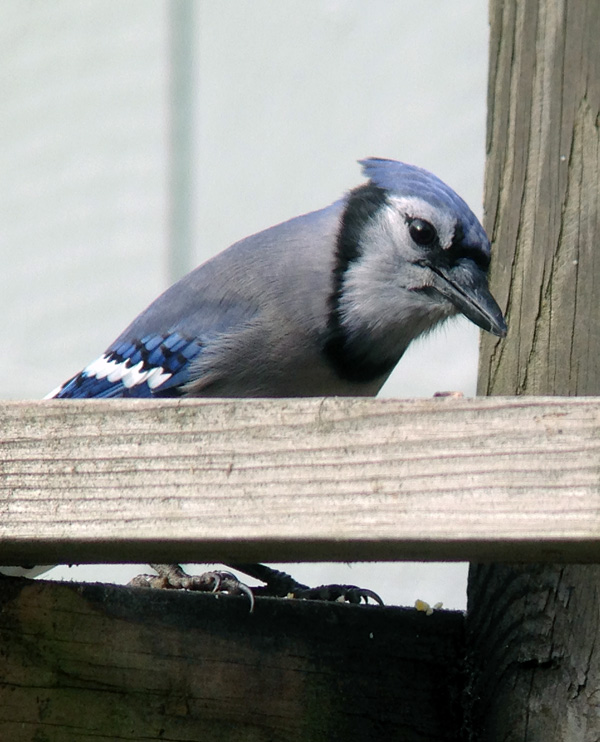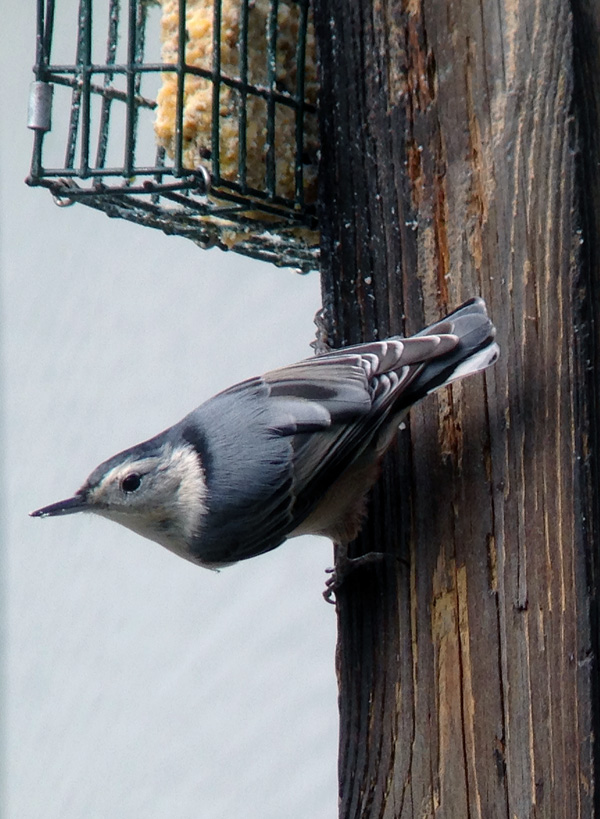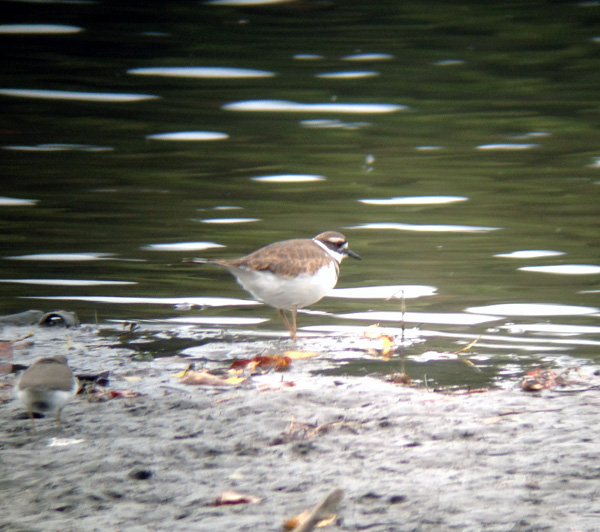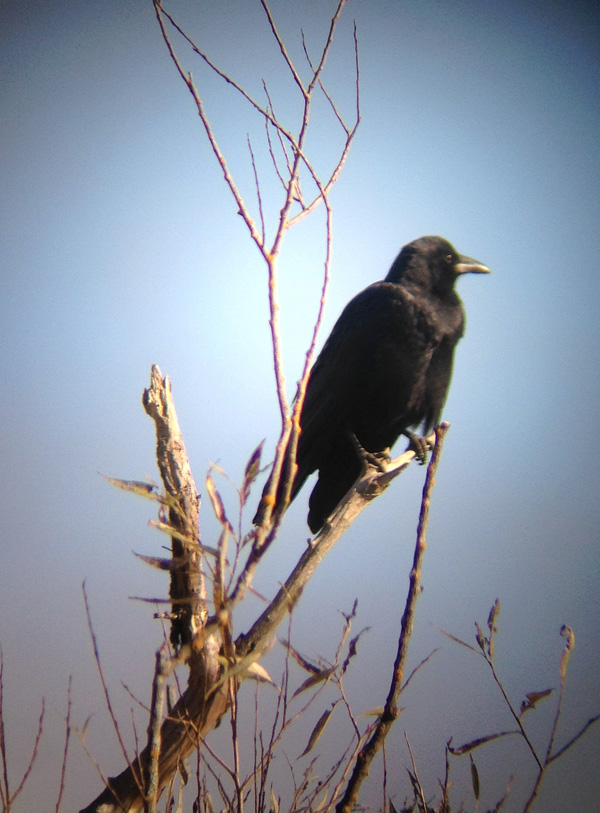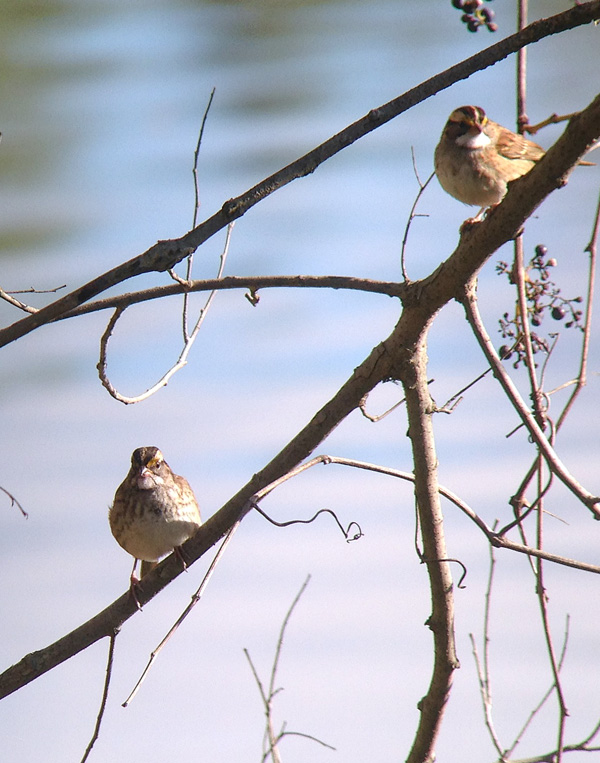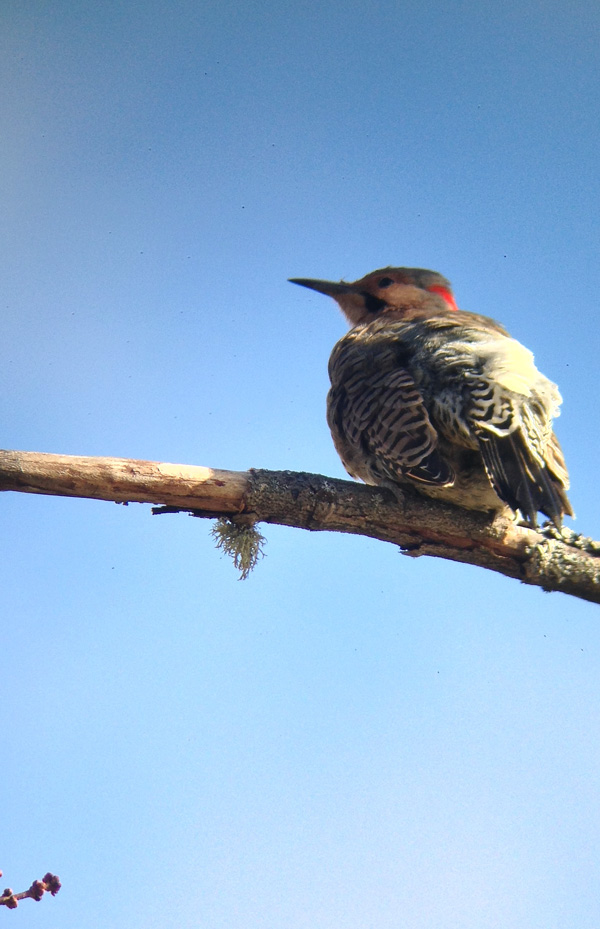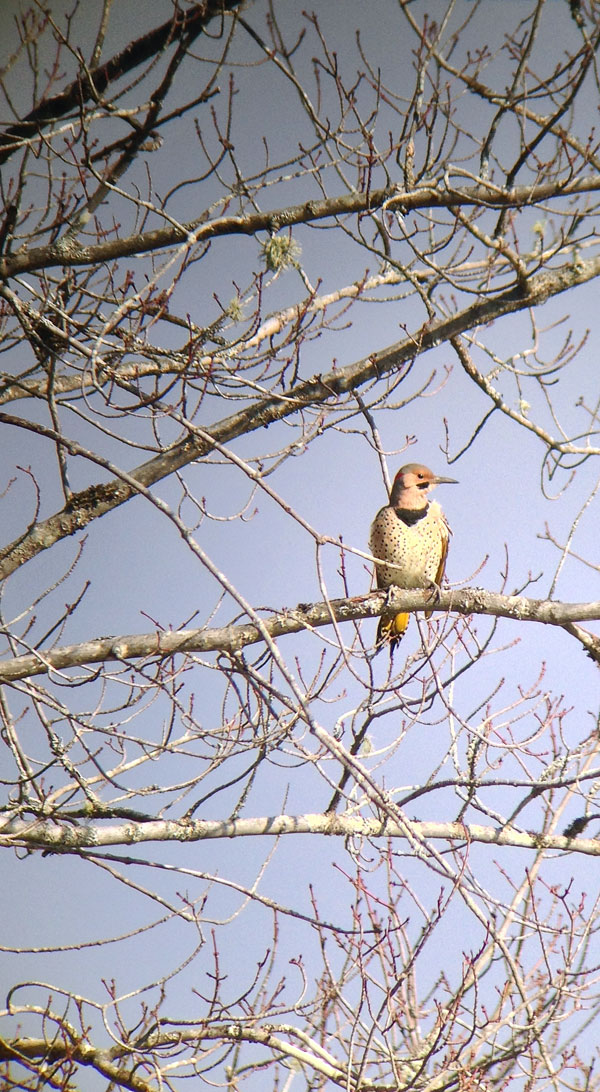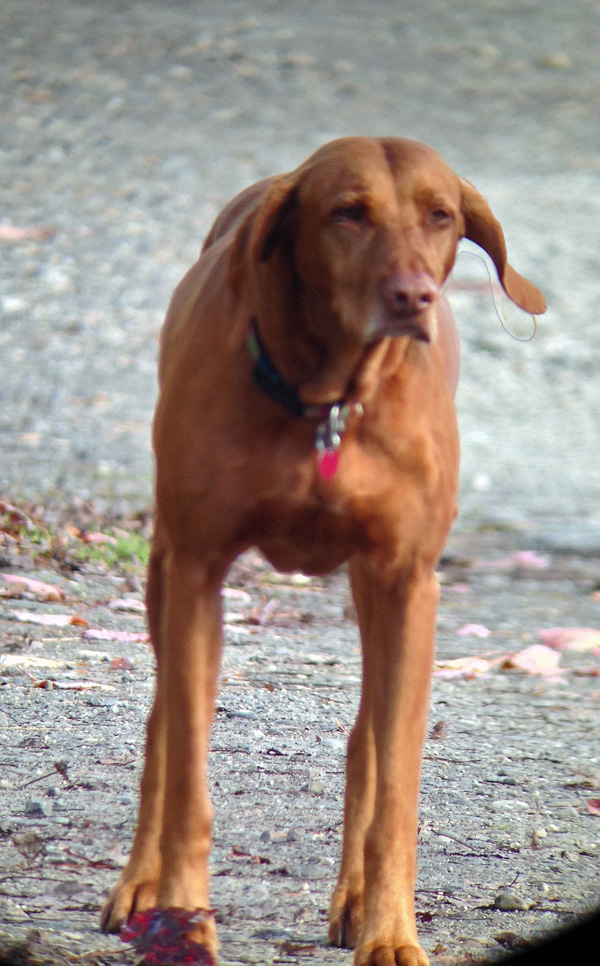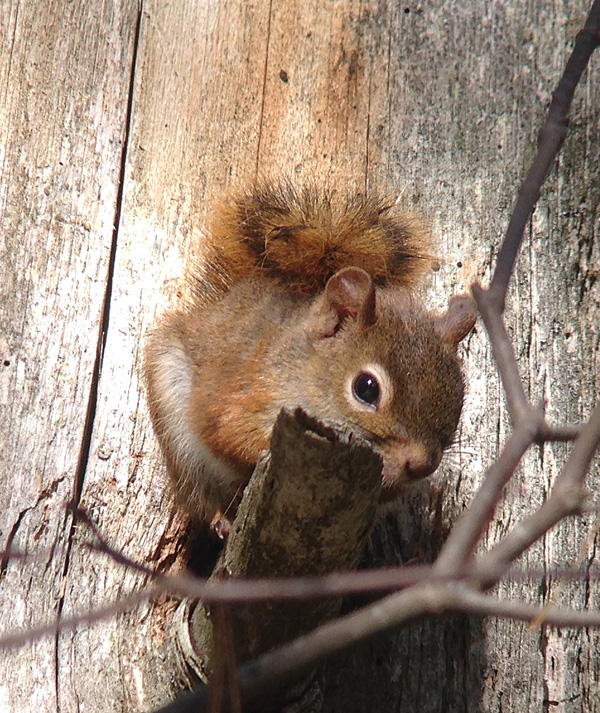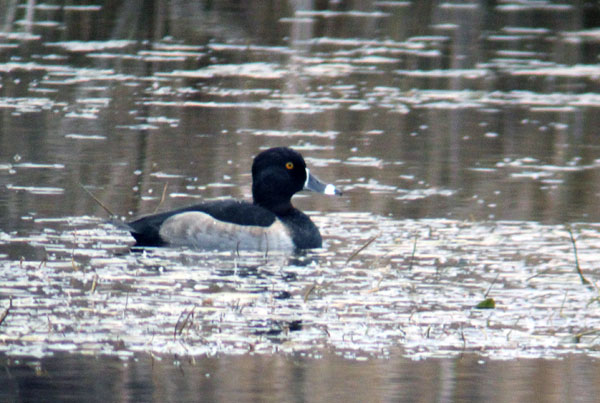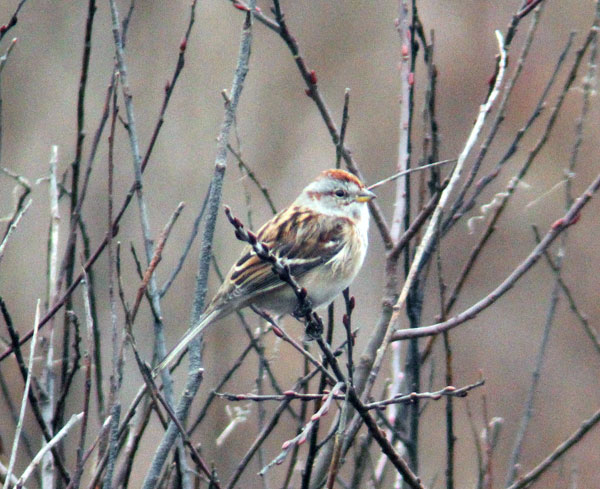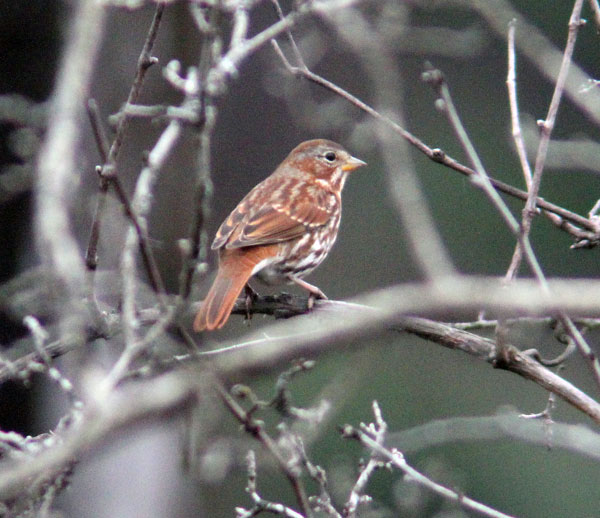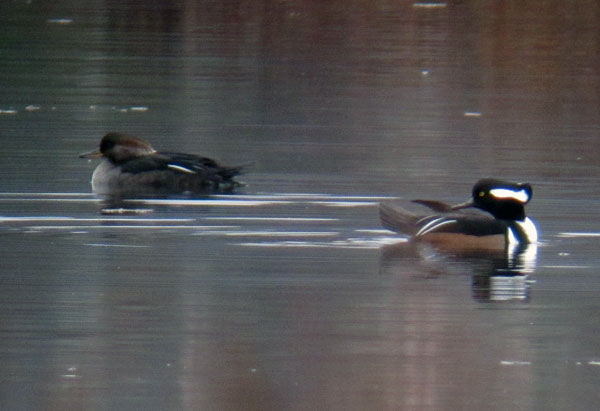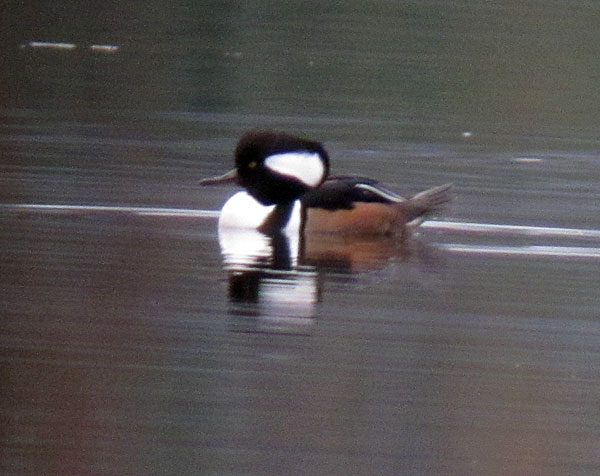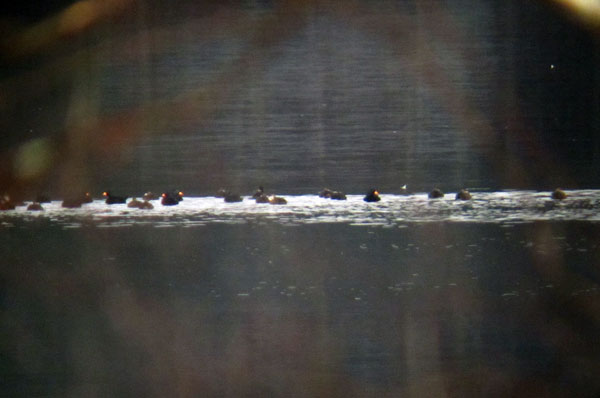I started this year all cranked to do a County Big Year and got off to good start the first quarter. Then a pinched nerve in my back took a couple of months to deal with and I missed a lot of the spring warbler season. Then, this Fall, I tore up my knee and missed much of the Fall warbler season. So, although I picked up some of the warblers, I scaled back my expectations and goals.
Recently, realizing that I’ll be out-of-state three or four weeks, I decided to get serious and get out there — and have added birds every week. Yesterday was a banner day — four additions and one the day before.
Thursday’s bird was “incidental” to say the least. I had been driving the back roads looking for Horned Larks, reported the day before, with no luck. Driving home, I stopped at a local mini-mart for the paper and as I got out of the truck, I heard this loud bird song. It seemed to echo and I thought it was a recording or something but followed it, to see a small bird high up in a bare maple, singing away. “I know that call,” I thought as I raced back to the truck for my binoculars. It had departed as I tromped into the store with bins around neck and a camera hanging from the shoulder. All the way home, I was trying to sort it out — then went on to other stuff, thinking I’d work on it that evening. Before long, I saw an eBird alert for a Carolina Wren at the same place, same time, by a friend who had seen it, but not me — and unknowingly, mentored me electronically.
Friday was more intentional. The day before, my birder friend Patti saw three birds that I needed and we exchanged emails about location. I packed up the dog early and off we went to Berlin Pond to check things out. Right away, I saw the Pied-billed Grebe that she had reported and fiddled around with trying to digiscope it. They spend a lot of time underwater and this one was out quite a ways, so the result below is simply for the record.
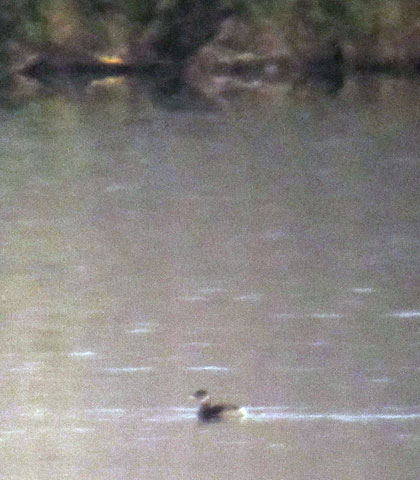
Pied-billed Grebe. Vortex Razor HD, 20-60 eyepiece at 20x, Canon SD4000, Vortex DCA & PS100 adapters.
The pond has few spots for viewing but with the leaves gone, you can work around the branches and tree trunks and see the western shoreline. There were over a hundred Mallards and mixed in, three American Coots, a Bufflehead (county year bird), and a Common Goldeneye (county year bird.) It’s tough to park with your blinkers on and count Mallards through a scope through a forest — but worthwhile today. It was too distant for photographs, especially given the branches.
I finished up, was heading homeward, and glanced out the one open spot on the road and saw some white — and thought it was just another hoodie. I pulled over, got out the scope, and saw a bird moving fast, with lots of white, and one that I didn’t know. Three Mallards caught up with it and the little flotilla paddled northward into an area where the bank was lined with trees.
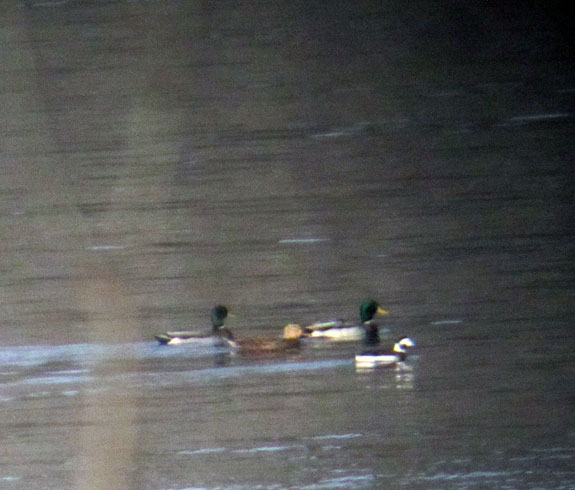
Three Mallards and a Long-tailed Duck cruising northward.
I didn’t know for sure until I got home and checked my books that it was a Long-tailed Duck. I’ve only seen one before and we don’t get a lot of them in Central Vermont. It was a good bird to hit the #150 mark. Now, to find those darn larks.
Here is a frenetic video of the LTDU moving back southward. Poor quality but good evidence.
